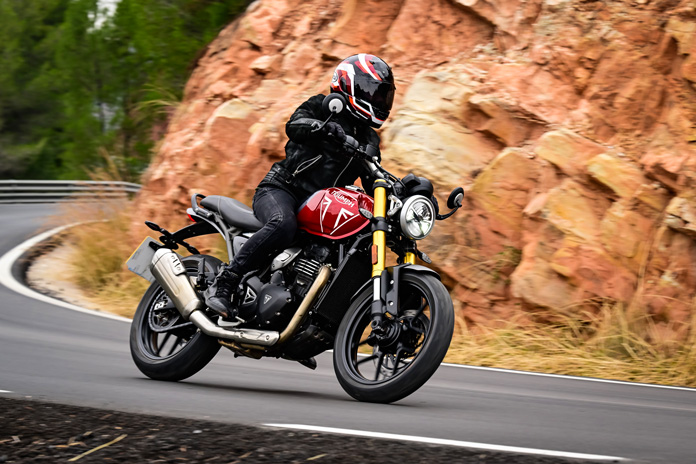
Prospective Triumph motorcycle owners need no longer pay their dues by wrestling large-displacement bikes until they build their riding skills. Instead, they can save their skin and wallets by honing their skills on Triumph’s new entry-level machines. Powered by 398cc Singles and with claimed wet weights below 400 lb, the new Triumph Speed 400 and Scrambler 400 X are the smallest and least expensive Triumphs we’ve seen in decades, paving the way for newer riders looking for an affordable and manageable first or second bike.
While these two Modern Classics share engines, they have different chassis and ergonomics and offer different riding experiences, giving riders two options to choose the bike that best fits their needs. The Speed 400 follows in the footsteps of the Speed Twin 900 and 1200 with a roadster aesthetic, while the Scrambler offers the potential for light off-roading with longer suspension, off-road-capable tires, a wider and taller handlebar, and other extras.
When crafting small-displacement machines meant to draw in new riders, Triumph assessed what new riders value most. Beginner-friendly models need to draw the eye with an attractive attitude, they need to feel forgiving and easy to ride, and they need to have a pricetag that isn’t out of reach for the target customer. Triumph has struck this balance, offering the Speed 400 for $4,995 and the Scrambler 400 X for $5,595.
Related: 2024 Triumph Scrambler 1200 X/XE Review | First Ride
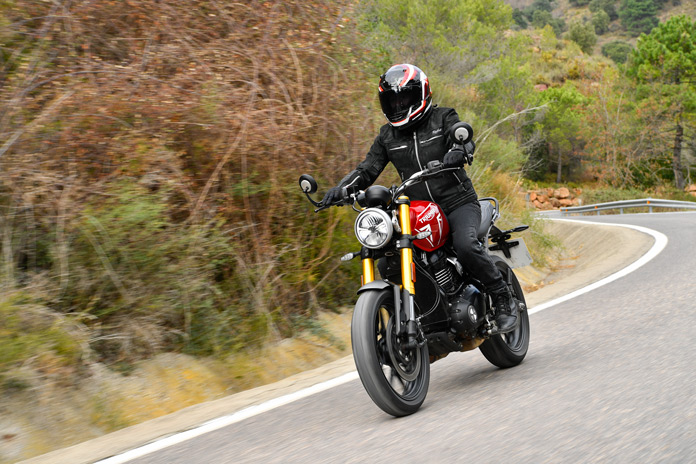
The engine powering both models is the new TR-Series liquid-cooled 398cc Single with a 4-valve DOHC cylinder head. Triumph claims 39.5 hp at 8,000 rpm and 27.7 lb-ft of torque at 6,500 rpm. Other similarities between the Speed 400 and Scrambler 400 X are the swingarm, switchgear, display, and 3.4-gallon fuel tank.

The differences between the two models begin in the chassis. They both have a tubular-steel frame with a bolt-on rear subframe, but the Scrambler 400 X features a longer wheelbase of 55.8 inches (compared to the Speed’s 54.2 inches) thanks to a different headstock. Both feature a 43mm inverted fork and a preload-adjustable monoshock, but the 400 X has longer suspension travel, with 5.9 inches front and rear compared to the Speed’s 5.5 inches front and 5.1 inches in the rear.
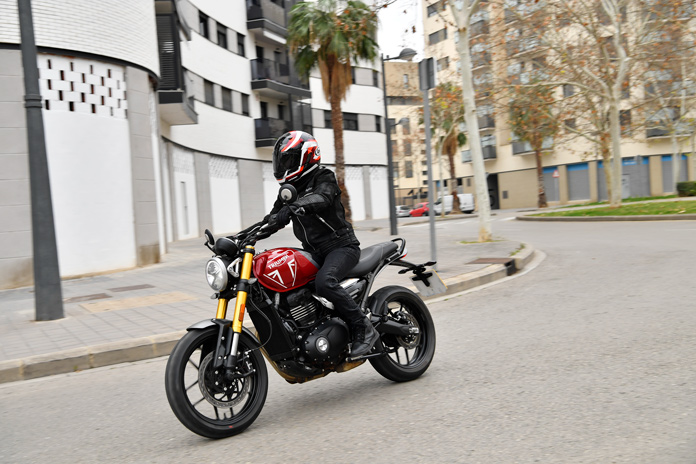
The Speed gets 17-inch wheels while the Scrambler has a 19-inch front and a 17-inch rear. The Scrambler’s front brake disc is larger than the Speed’s at 320mm compared to 300mm, both pinched by a 4-piston caliper. Both bikes get a 230mm rear disc paired with a 1-piston caliper.
These differences between the Speed 400 and Scrambler 400 X are noticeable as soon as you swing a leg over them. The Speed 400’s 31.1-inch seat height is an easier reach for those of us with short inseams, and it also features an upright and comfortable riding position but allows the rider to more easily tuck into a sporty position when the speed picks up.
Related: Best Motorcycles for Smaller Riders: Seat Height 31-31.9 Inches
In contrast, the Scrambler uses a wider and taller handlebar, a taller seat height (32.9 inches), and lower pegs, resulting in an overall roomier feel. The Speed 400 has a claimed wet weight of 375 lb, while the Scrambler 400 X has a wet weight of 395 lb.
To get a taste for how the Speed 400 and Scrambler 400 X perform, and to be able to compare them back-to-back, we hopped on a flight to Spain to attend Triumph’s press launch. During the riding day, we swapped between the bikes as we rode through city traffic and up into the mountains north of Valencia, even tackling a short gravel section.
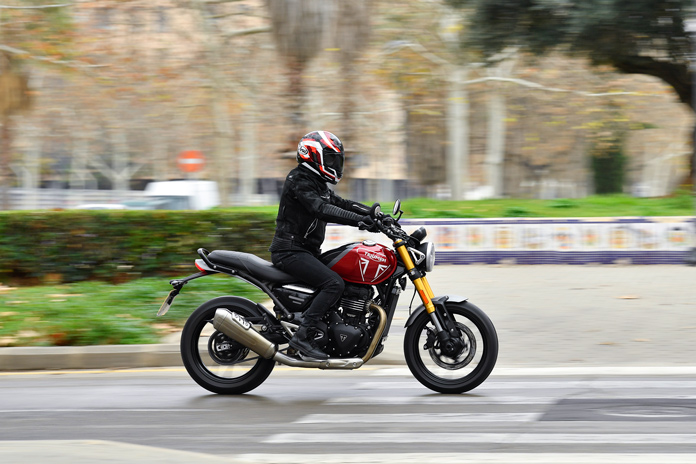
GEAR UP
- Helmet: Arai Contour-X
- Jacket: Joe Rocket Wicked
- Gloves: Joe Rocket Ballistic Ultra
- Pants: Alpinestars Daisy V2 Women’s Riding Denim
- Boots: Highway 21 Axle Leather Waterproof
I started on the Speed 400, drawn to its shorter seat height and more classic appearance. As we rolled down Valencia’s streets, I found the Speed 400 to be an adept city bike. Short gearing allows for reasonably quick acceleration, and the brakes were capable of shedding speed quickly when approaching a stop. The Speed is also quite nimble, aiding in low-speed maneuverability.
We then headed north into the mountains. The 398cc Single ran like a champ, eating up miles of curvy roads. Power was available for a spirited ride, but the delivery was smooth and even, perhaps making things a little less thrilling for veteran journalists but allowing for a controllable ride for newer riders. The Speed 400 was easy to flick into curves, and tucking down delivered a more engaging experience.
After a quick stop for a cup of café con leche, we were ready to continue farther into the mountains. The Speed 400’s suspension was pleasantly plush for soaking up any inconsistencies in the road, although it allowed the front end to dive when braking at speed. If a curve turned out to be tighter than expected, smooth and even braking was called for to slow the bike without pitching too far into the curve. Past 75 mph or so, the engine gets a little buzzy, but the power is still there, and we didn’t reach max speed during the ride. The engine’s sweet spot is around 4,000-7,000 rpm, and the exhaust has a pleasing note.
Before we knew it, our stomachs were signaling lunch, and we parked the bikes in front of a family-owned restaurant in a small hillside town. We enjoyed some paella, had another cup of coffee, and then headed out on the Scrambler 400 X.
The first thing I noticed while mounting the Scrambler was that the 32.9-inch seat height was quite a stretch for my 5-foot-1 height. Newer riders who are closer to my size will struggle with this taller seat height, but it seemed to be quite manageable for the other journalists who were a few inches taller than I am. The Scrambler 400 X offers a roomier cockpit with its taller and wider handlebar and lower footpegs. Even though I had a long stretch to the ground, I found the seating position of the Scrambler more comfortable for all-day riding than its Speed sibling.
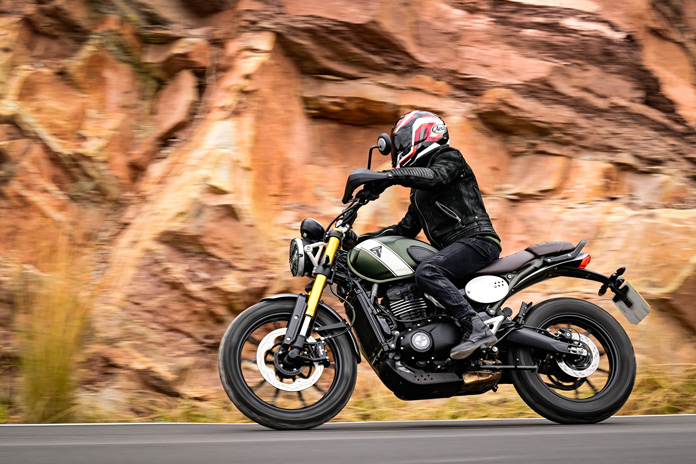
The engine hasn’t been changed for use in either model, although the X has slightly taller gearing. While the Speed encourages spirited riding, the Scrambler prioritizes comfort. The Scrambler’s larger front wheel meant it didn’t lean into curves quite as gracefully as the Speed, but the wider handlebar helped provide the needed leverage to keep pace with the riders aboard Speeds.
Both models feature ABS and switchable traction control, and the Scrambler adds an off-road mode and the ability to disable ABS. We only got a brief off-road experience with the Scrambler, but it proved capable of being up for some light off-roading. It wouldn’t be our first pick to tackle serious trails, but Scrambler owners need not worry about taking a dirt or gravel shortcut should the need arise.
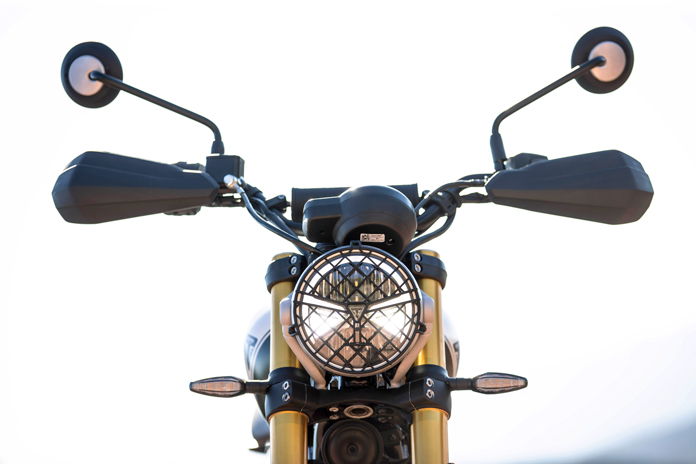
Aside from the off-road riding mode, the Scrambler 400 X offers a few other upgrades not present on the Speed 400. Adding to the bike’s scrambler styling and capabilities are protection for the headlight and radiator, handguards, a handlebar brace with pad, and a longer rear fender, all of which provide a little more peace-of-mind for those looking to venture off the pavement.
Instrumentation is the same on both models and consists of a round analog speedometer with an integrated LCD screen that shows a tachometer, fuel level, and a gear indicator. On the right side of the instrumentation is a USB-C charging port, a convenient feature if you like to ride with your phone mounted on the handlebar. The display is also set up to show heated grip info for those who add that accessory. The instrumentation is simple yet intuitive.
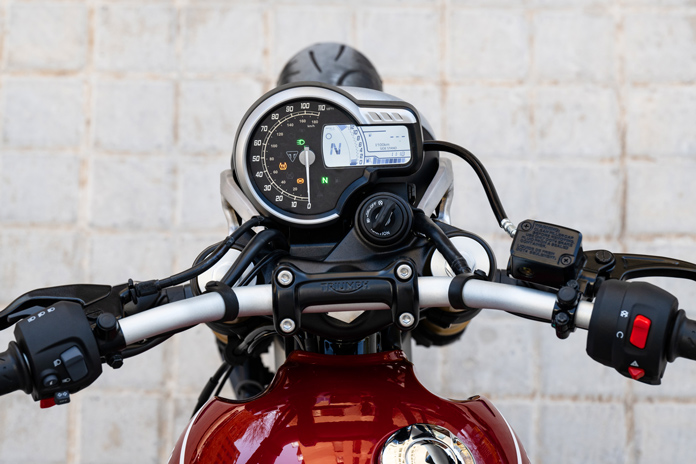
Triumph has a reputation for quality and sophistication, so seeing models that are priced several thousand dollars below any other on-road model in the Triumph lineup led us to wonder if the lower price would reveal itself in lower quality components or poorer fit and finish. We’re happy to report that these two models look and feel like quality products that we’d expect from Triumph.
They were created in a partnership with Bajaj Auto in India, and Triumph told us that the bikes are selling well in India for those who want something more premium than the 125-150cc bikes often seen on Indian streets. The bikes are manufactured by Bajaj, as well as in Triumph factories in Thailand and Brazil.
It’s hard not to become dismayed when prices seem to be increasing everywhere you look, and motorcycles are no exception. Many bikes are becoming bigger with more technology and more features, which is exciting for customers with deep pockets, but they are receding farther out of reach for many buyers, especially younger riders.
On U.S. shores, these models will arrive in dealerships in early March. The Speed 400 has an MSRP of $4,995, and the Scrambler 400 X is priced at $5,595. Color options for the Speed 400 are Phantom Black, Carnival Red, or Caspian Blue. Colors for the Scrambler 400 X are Phantom Black and Silver Ice, Carnival Red and Phantom Black, or Matte Khaki Green and Fusion White.
It’s refreshing to see Triumph providing more accessible options that are affordable and inviting while still delivering the quality and riding experience of a premium brand. We’ll see how they catch on in the U.S. once they start arriving at dealers, but we expect them to draw serious attention and bring in a new customer base for Triumph.
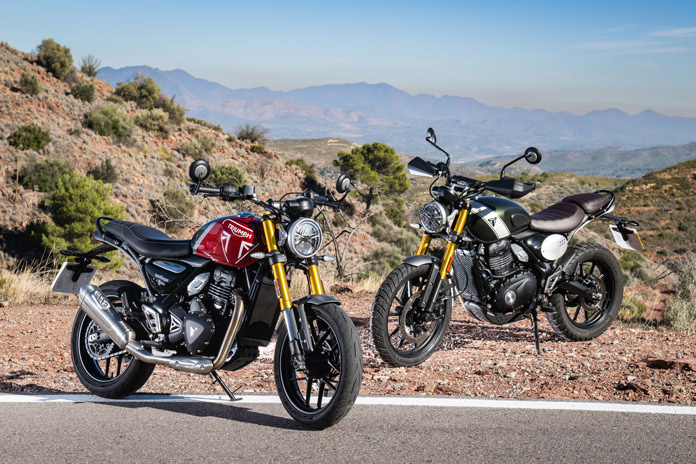
Check out more new bikes in Rider’s 2024 Motorcycle Buyers Guide
Triumph Speed 400 (Scrambler 400 X) Specifications
- Base Price: $4,995 ($5,595)
- Website: TriumphMotorcycles.com
- Warranty: 2 yrs., unltd. miles
- Engine Type: liquid-cooled Single, DOHC w/ 4 valves
- Displacement: 398cc
- Bore x Stroke: 89 x 64mm
- Horsepower: 39.5 hp @ 8,000 rpm (factory claim)
- Torque: 27.7 lb-ft @ 6,500 rpm (factory claim)
- Transmission: 6-speed, cable-actuated slip/assist wet clutch
- Final Drive: Chain
- Wheelbase: 54.2 in. (55.8 in.)
- Rake/Trail: 24.6 degrees/4.0 in. (23.2 degrees/4.3 in.)
- Seat Height: 31.1 in. (32.9 in.)
- Wet Weight: 375 lb (395 lb)
- Fuel Capacity: 3.4 gal.


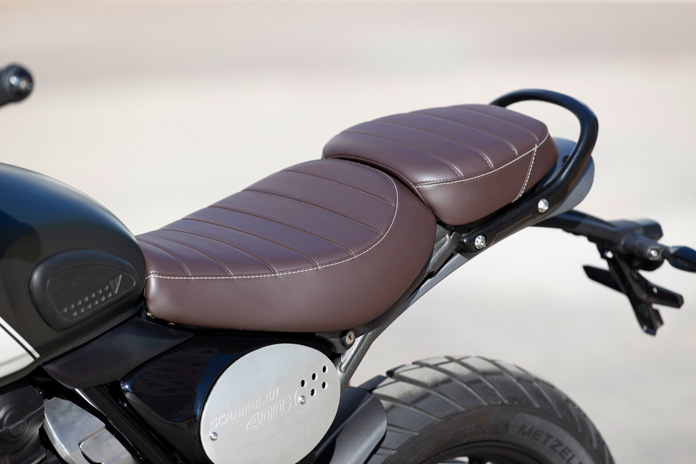
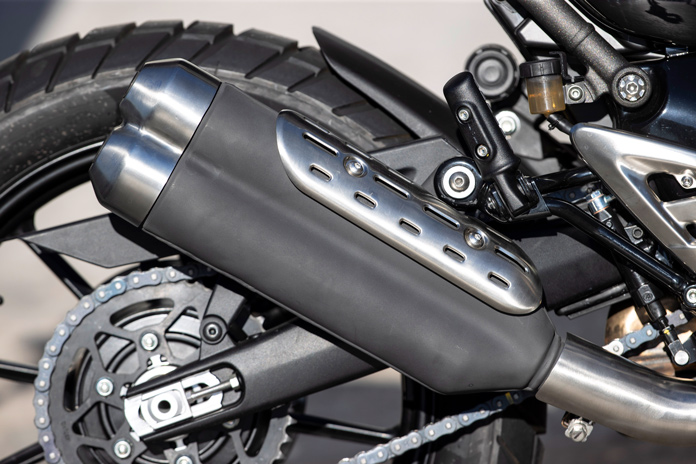
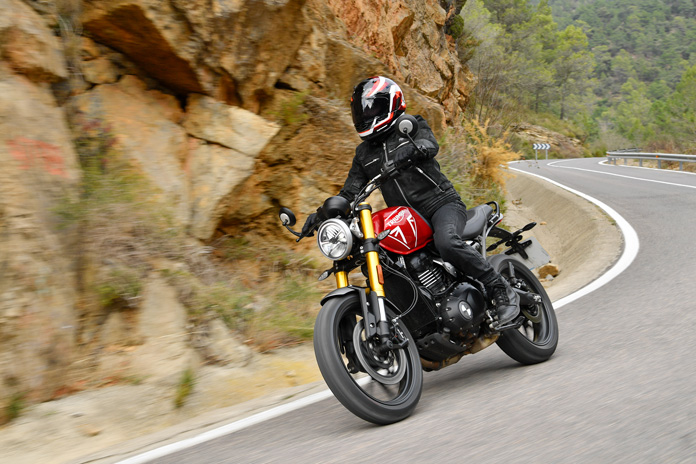
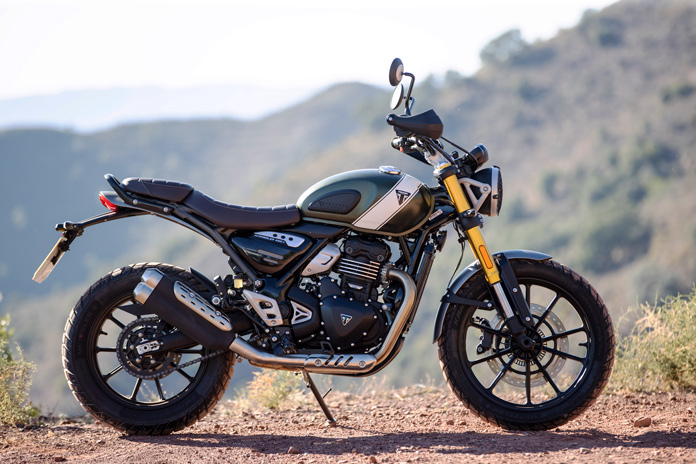
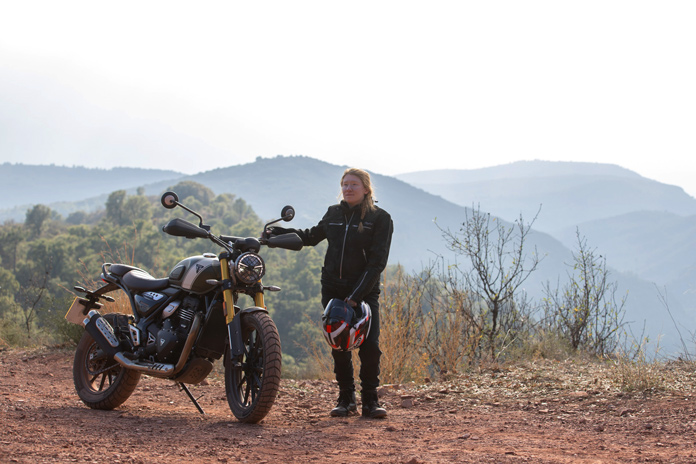
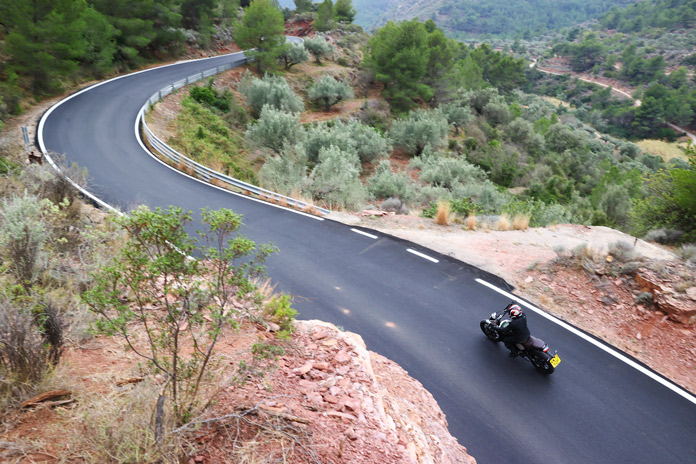
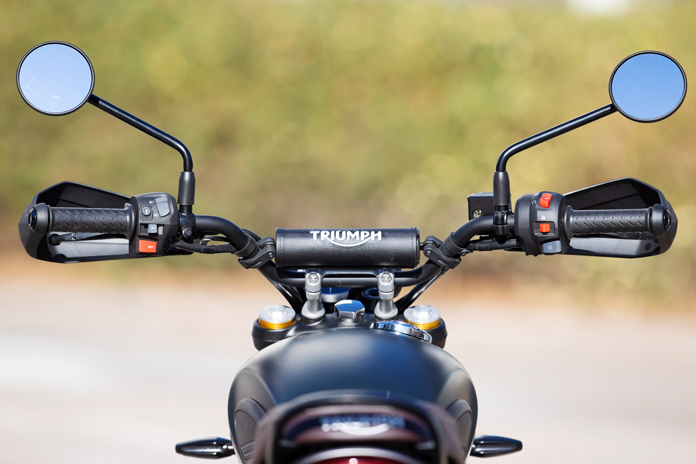



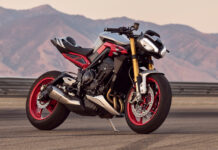
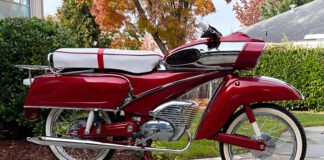



The 400X would be an ideal bike for me, as a returning rider living in a small town, with 50 mph county roads and 60 mph freeway. It’s unfortunate, however, that after the two nearest dealers abandoned Triumph, the closest dealer is now over 90 miles away. That’s a deal-breaker for me.
Lower Power higher weight more vibration, lower speed, far fewer dealers, unknown reliability, cheaper brakes and suspension one less cylider than a Kawasaki 400 ninja. Besides look which i am not o fan of eoither why would anyone want this?
Because it looks so much better.
😀😂🤣
Too bad we can’t add “Made In China” to your love list.
I sometimes attempt sarcasm.
Not sure where the China comment came from. If anyone is interested, these are built in Thailand.
A few operational stats like MPG, tuning frequency, oil change mileage etc would be beneficial. ….for all cycles tested.
Both are very good looking bikes and I know several riders in my age group (70’s) who are tired of hauling heavy, powerful machines around when all they want to do is ride and enjoy the trip. The power of these machines will do the job just fine.
I really like the look of both bikes, and from the write-up I’m sure I’d be happy riding either one. Not everyone wants to ride a Ninja 400.
The Speed reminds me a lot of my first bike: a red 1978 Yamaha XS400. While it was a parallel twin also styled like a small Bonneville, I suspect the new bike has a better PWR along with modern everything else. What a perfect bike for this segment!
12 thousand orders so far tell the story of how this ” little” bike is doing. Why do testers have to assume smaller engined bikes are always for newer or younger riders, is it because they want to show off their own experience and riding skills? This is well designed, nicely made motorcycle that happens to have a 400cc capacity.
Agreed; sometimes less is more. A friend of mine, who happens to be 81, is looking real hard at this bike because it is lighter and more manageable than his old SV650, and has more power than his 400 Burgman. The old school looks don’t hurt either, for those of us who grew up lusting after Nortons and Triumphs in the 60s.
I’m going from a 650 Versys to this bike (64 years old) just riding around on backcountry roads enjoying the scenery this will be more than powerful enough. I also agree the looks are like the childhood bikes we remember.
Thank You!!
What are the valve adjustment intervals? Does it run on regular or premium gas? With the inflation so high the past 4 years that information would be valuable to those of us who are thinking long term cost.
Thanks for your questions, Jimmy. Triumph suggests checking valves every 20,000 miles and using premium gas with a minimum 91 octane rating.
I own the 400x and have just over 2,000 miles. I’ve ridden lots of bikes of all types (cruisers, rockets, dual sports & dirt bikes). I currently own a big Harley Tourer, KTM 300 woods bike and (whisper voice) a TW200. I enjoy all types of riding and am lucky I have multiple bikes for specific purposes. I can say the Triumph is pure joy to cruise backroads and make errand runs when the rear top pack is large enough to bring home the goods. It’s comfortable with plenty of power to cruise hilly New England backroads and has the ability to cruise at 60+ if needed. Within the first few rides I swapped the 14 tooth with a 15 tooth which delayed the vibration considerably. The bike really is well made and gets lots of compliments. Time will tell how mechanically sound it is.